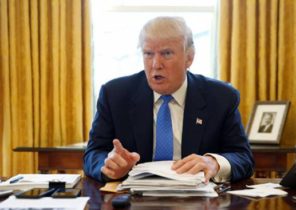
“The globalization of the yuan seems inexorable and impetuous,” reported the Economist in April 2014. Indeed, for over a year, to August 2015, the proportion of the yuan in the total volume of international payments has doubled to 2.8%, making China the currency came in fourth place in the list of the most used in the world.
But after that the process went in the opposite direction. Today, the share of the yuan in international payments has fallen to 1.6%, and it has slipped to seventh place. Global bond market the use of the yuan decreased by 45% compared to the peak reached in 2015. Banks in Hong Kong, the volume of deposits denominated in RMB, decreased by half. Finally, if in 2015, 35% of foreign trade transactions of China was conducted in RMB (almost everything else is in dollars), today that share has fallen to about 12%.
Turn in the fate of the yuan can be attributed to four main factors.
First, from 2005 to 2013, the value of the yuan in dollars grew almost every year (it has appreciated by 36.7%), but since then the rate gradually decreases, which leads to loss of interest among speculators. Since 2014, the yuan every year weakens more and more. Since the beginning of the process of falling, it has already decreased by 11%, despite the intervention of the people’s Bank of China (PBOC) to strengthen the currency (and not weaken it, according to the President of the United States Donald trump). As a result, investors abandoned the idea that the strengthening of the yuan is the only version of events. The inflow of capital associated with that idea stopped.
The fall of the yuan against the dollar was a result of slowing economic growth in China, which took place at the expense of loans, and higher default risks. Unsurprisingly, people and companies in China are looking for new ways (some legal, some not) to withdraw money from the country.
In April, at a presentation in new York, the Deputy Chairman of the people’s Bank of China And Gan trying to restore confidence to nervous investors, saying that the level of NPLs in the Chinese banking sector “largely stabilized after a long period of growth.” This, he said, was “a positive development for the financial market”.
But Gan tricky. Stabilized the share of overdue debt in the total volume of Bank lending, but this was only due to the fact that continued to increase the number of loans. Many of the new loans were granted to insolvent clients, and we can expect that over time, they will have problems. Moreover, in absolute terms, the overdue debt grew by $ 35 billion in 2016, reaching 220 billion. At the same time Chinese banks use various accounting tricks to hide from a regulator the loans for the trillions of dollars.
Trying to stop the fall of the exchange rate, the authorities made it difficult to convert yuan into dollars. And if they had supported Chinese investment abroad, now began to block international mergers and acquisitions in order to allow national companies to export capital. At the same time they have complicated the procedure of the return of capital by foreign investors. This measure helps to keep in the country the capital that there has already come, but it deprives the aliens of incentives for new resources.
And this is the second factor that discourages to accumulate Chinese currency. Faced with the choice between short-term economic stability and exchange rate flexibility, the Chinese authorities have chosen stability. In this regard, the issue was the seriousness of their long-term intentions to move to full convertibility of the yuan, although it is a very important step on the way to achieving the status of a real Renminbi a reserve currency.
There is a third factor weakening the Renminbi: the country has exhausted its export potential. China with its currency moved forward thanks to the incredibly successful integration of countries into the global economy after joining the world trade organization in 2001. China’s share in world exports rose from 1% in 1980 to 14% in 2015; it became the largest exporter in the world. Since then, however, the country’s share in global exports has fallen to 13.3%. Those who have seen in China a state analogue Amazon. com, which each year sells more and more number of people were disappointed.
The fourth factor is turning against globalization itself. In the period from 2007 to 2015 the volume of international capital flows (in the form of purchases of stocks and bonds, foreign direct investment and loans) decreased by more than two or three from 11.9 trillion to $ 3.3 trillion. Began to encounter trade barriers. Discriminatory policies are found more often now than liberalization. The volume of commodity trade is also falling, down 10% from 2010 to 2015. This is the largest decline for any four-year period since the Second world war. As a result, China is not just losing market share in exports, it is losing share in a shrinking global market. In the end, the dollar value of Chinese exports have dropped 9.1% since its peak in early 2015.
To sum up. Compared to the situation observed only a few years ago, now the world has very little — and, maybe, and there are no reasons to accumulate yuan. The globalization of the yuan is no longer a “relentless and unrestrained”. In the foreseeable future, on the contrary, it seems to be completely stopped.







